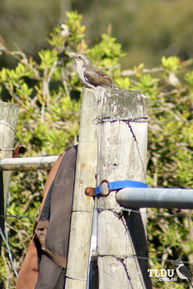
Shoppers Feedback:
Jan 17, 2017
Hello Ros,
I have now paid the invoice, but I would like to write to you just to say a big THANK YOU for getting me the Penguin!
The ChatterMate Penguin became a nice memory for me when I was in New Zealand, and I am so greatful to you for arranging so that I could have it! :-)
Thank you so much!!!!!!!!!!!
Regards,
Malin
Hi Ros,
Many thanks for your very kind email. I really appreciate your prompt reply!
I appreciate your advice regarding the decorations and customs. These are a gift for my daughter’s exchange student family so when she returns home on the weekend I will show her and see if she loves them as much as I do!
Thanks so very much again - I am truly grateful for your kind assistance.
Kind Regards
Bernadette
Ros,
Thanks again for the great customer service. It's a refreshing change!
Best regards,
Trevor
Hey Roz,
Thank you for your emails. Just loved my first order. The cute little Aussie bush critters are going to be used for an office Christmas decoration. My colleagues also liked them and talked about making an order to your site. I'll send you a photo when completed.
I'll be ordering more to send to my daughter's host family in America.
Fabulous service from you.
Kind regards,
Michelle
Thankyou. Order arrived today. One very happy grandson with his new beastly binoculars.
Regards,
Irene
- Home
- Wild Wonders
- Shop
- Aromas of Australia
- Australian Made
- Books
- Book Marks
- Christmas Decoration Sale
- Christmas Decorations
- Clocks
- Drink Holders
- Garden & Outdoor
- Gift Wrapping & Cards
- Home & Giftware
- Jewellery
- Keyrings
- New Products
- Pencils & Pen Holders
- Photo Frames
- Plush Toys
- Plush with Sound
- Sheepskin Rugs
- Stationery
- Stone Carvings
- Toys & Games
- Travel Goods
- Wedding
- Wild Figurines
- Wildlife Safety Products
- Wind Chimes
- Wine Charms
- View All Products
- Wildlife
- Australiana
- Explore
- Contact Us
Pallid Cuckoo

Quick Facts
| Length: | 30 cm |
| Height: | - |
| Weight: | 89 grams |
| Colour: | - |
| Habitat: | Most open forests and woodlands, also cleared and cultivated open country |
| Food: | Hairy caterpillars, insects and their larvae |
| Predators: | - |
| Status: | Secure in all states and territories in Australia |
The Pallid Cuckoo is identified by its grey plumage, which is darker on the wings and back, and its broadly barred black and white undertail. The bill is brown, the legs and feet are grey-brown, and there is a bright yellow ring around the eye. No other Australian cuckoo has this colouration. It is a large, slender cuckoo and is somewhat hawk-like in appearance during flight. Young Pallid Cuckoos are mottled with brown and buff above, with a white spot on the nape, and are streaked with grey-brown and white below. As with other species of cuckoo, its call often betrays its presence long before it is seen.
The similar sized Oriental Cuckoo, has conspicuous black and white barring on the lower breast and belly and is generally darker in plumage. It is also considerably scarcer in Australia.
The Pallid Cuckoo is the most widely distributed of the cuckoos and is found throughout Australia.
The Pallid Cuckoo inhabits most open forests and woodlands, as well as cleared and cultivated open country.
The Pallid Cuckoo has a liking for hairy caterpillars, but will take other insects and their larvae. Prey is spotted from low perch and is pounced on, usually on the ground. Some insects are taken from foliage.
The Pallid Cuckoo lays its eggs in the nests of honeyeaters, woodswallows, whistlers and flycatchers. Common host species include the Willie Wagtail and the Hooded Robin. The female cuckoo removes one of the host's eggs and replaces it with one of her own. The cuckoo egg usually closely resembles the host egg, and the unsuspecting host hatches it along with its own. The cuckoo egg usually hatches more quickly and the young cuckoo instinctively forces the other eggs (or chicks) out of the nest. The cuckoo rapidly outgrows its 'foster' parents, who frantically search for sufficient food to satisfy the demanding young bird.
Last Updated: Thursday 18th July, 2013
BirdLife Australia - www.birdlife.org.au
BUSH e-TELEGRAPH
Signup for our monthly newsletter the "e-Telegraph"
Quick Links
Home | The Beginning | About The Land Down Under | Wild Wonders | Advertise on Wild Wonders | Christmas Decoration Sale | Christmas Tree Decorations | Drink Holders | Plush with Sound | Stone Carvings | Wildlife Wine Charms | Freebies | Australian Wildlife | Help Our Wildlife | Australiana | Photo of the Month | Explore The Land Down Under | Contact Us | Legal Notices

